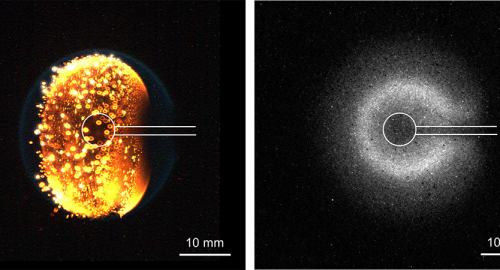
Unusual "cool flames" discovered aboard International Space Station

- 17-07-2021, 19:43
INA - Sources
An entirely new class of fire, spherical cool diffusion flames or simply “cool flames,” has been documented aboard the International Space Station.
The discovery of these dim, quiet flames—led by fire protection engineer Peter Sunderland at the University of Maryland (UMD)—could literally ignite development of the combustion engine of the future.
“This discovery transforms our understanding of what fire can be and what it can do,” said Sunderland, a professor in UMD’s A. James Clark School of Engineering.
“The goal of our research is to understand the particular processes ongoing in spherical cool diffusion flames. If we can understand and model how they work, then we might be able to harness cool flames to design a new class of clean combustion engine.”
Cool flames are aptly named: They burn at extremely low temperatures and emit a near-invisible blue glow. (For comparison, a natural gas burner at high heat on a conventional stove top can burn at around 3100 degrees Fahrenheit/2000 Kelvin; a typical cool flame hovers around 900 degrees Fahrenheit/800 Kelvin.) They are also somewhat mysterious: As recently as 10 years ago, cool flames had only been theoretically predicted.
First observed during an experiment aboard the International Space Station (ISS) in 2012, the cool flames appeared only briefly before the liquid fuel was depleted. The sighting catalyzed an emerging, rapidly growing field in combustion research.
US Central Command: We killed ISIS terrorist leader Abu Yusuf in Syria
- International
- 24/12/20
Liverpool compete with Real Madrid to sign Olympique Lyonnais star
- Security
- 24/12/19
Iraq assumes presidency of Arab Investment Company’s Executive Board
- Economy
- 24/12/17
Hackers exploiting Microsoft Teams to gain remote access to user’s system
- Multimedia
- 24/12/17












